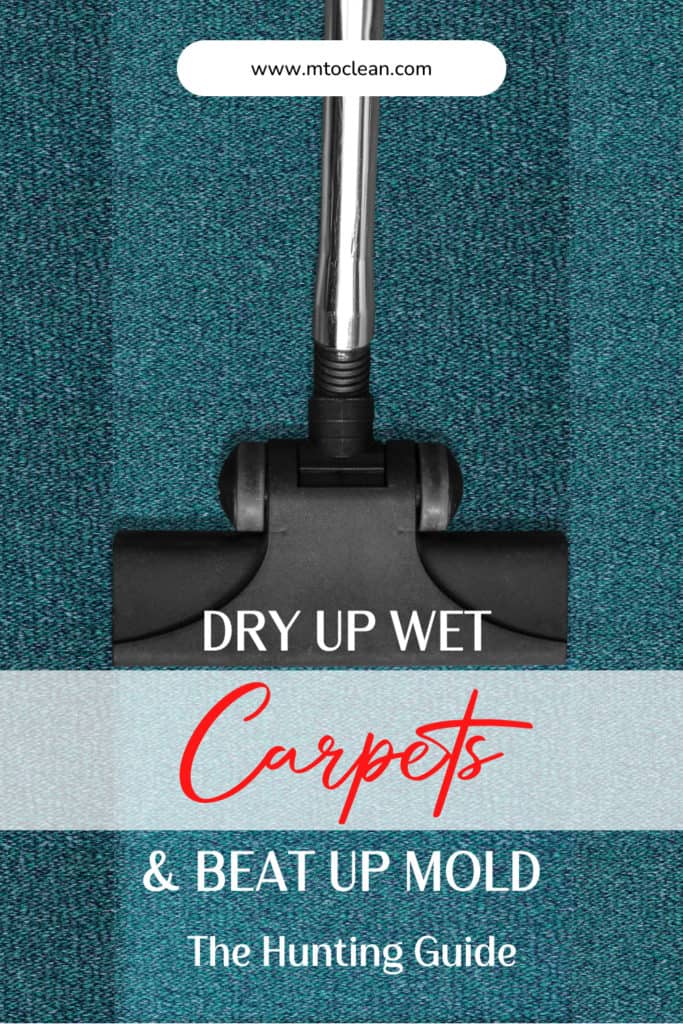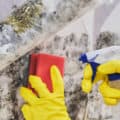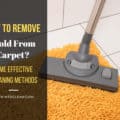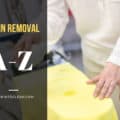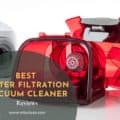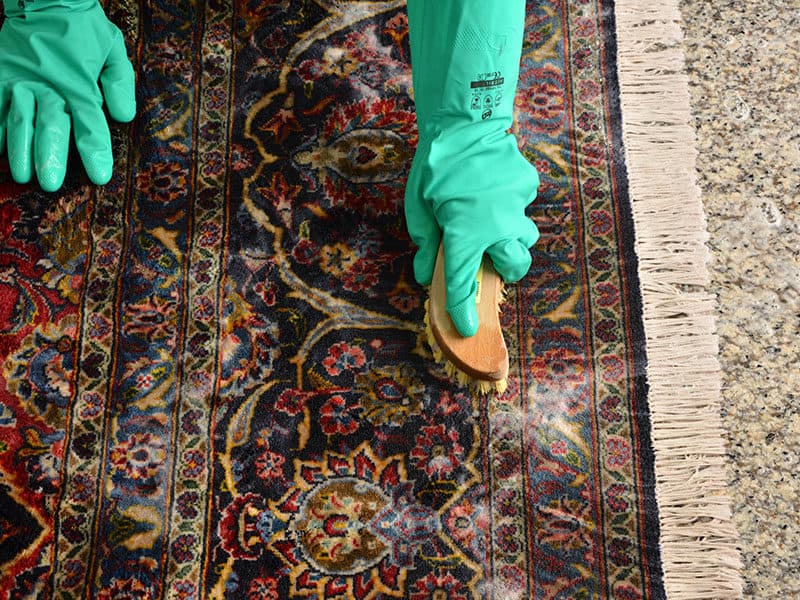
Soon you know that moisture and the carpet aren’t mates. A wet carpet can become problematic if not dried right away. Mold growth is one of many issues that arise, and it can negatively affect your health.
The foul odor from the wet area is one of the first ways to identify moisture issues. Additional signs of trapped humidity may include constant symptoms of allergy and disease in pets, family members, as well as discoloration in regions of your carpet.
There are still some harmful impacts when not drying wet tapestries thoroughly that you have to keep in mind.
Increase Mold Exposure
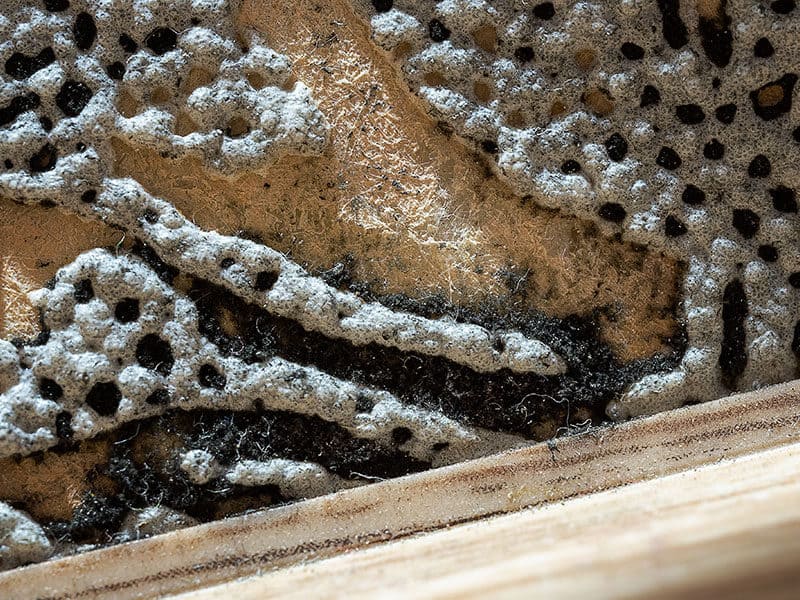
Dangerous molds like Stachybotrys can generate mycotoxins. These mycotoxins can cause rashes, coughs, infections, allergies, and other chronic health problems.
Typically, mold will become airborne and stays in the air. Breathing in the contaminated air can cause lifelong problems, particularly for anyone with asthma, weakened immune systems, chronic allergy, or respiratory issues.
See also:
- How to Remove Mold From Carpet? – Some Effective Cleaning Methods
- How To Get Slime Out Of Carpet? – Some Informative Tips You Should Know
- How to Baking Soda Carpet Cleaner: 3 Uses That Will Blow You Away 2023
- Top 15 Best Carpet Cleaners for Pets To Buy in 2023
- How to Remove Coffee Stains from Carpet: 5 Methods That Work 2023
- Top 15 Best Portable Spot Cleaners for Carpet Stains To Buy 2023
- How To Clean Carpet With Baking Soda: The Ultimate Guide 2023
- How to Clean Carpet by Hand – Deep-Cleaning Guide
Cause Fires & Electrical Issues
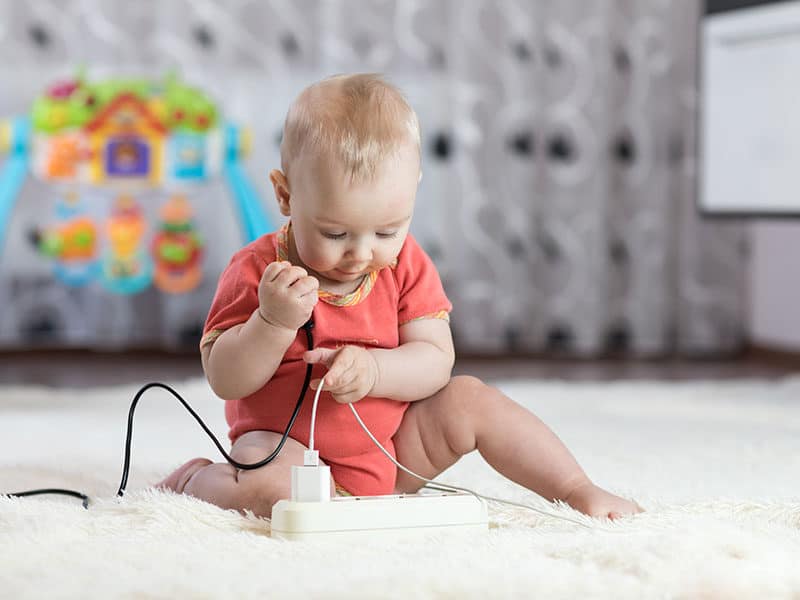
There is also a danger of shock when the carpet is wet. The water-exposed electricity outlets can cause life-threatening problems for anyone around or near the outlet.
In your house, this can also lead to extremely dangerous electric fires. Do not let the carpet absorb water or stay wet.
It’s the top criteria that your carpets do need to stay clean and stain-free all the time. If not, when the watering situation occurs, you have to face both dirty and wet carpet cleaning. Keep the carpets neat and tidy without a vacuum, will you?
There you go, get to know all the MUST about wet carpets. It’s time to lean in more statements and notices about the bacteria or mold. Which is the most common cause? How to clear them from the surface?
After that, I will explain why you need to dry the wet rugs, which typical effects may have when living with risks. For sure, you will look forward to knowing the drying procedure. It’s not much complicated, but you need to pick up the right solution for your place.
No more hassle; you are heading up to the most critical parts. I will ask you a favor; keep reading to tell me that you choose the medium-size dry or a quick dry after cleaning?
Will A Wet Carper Dry Itself?
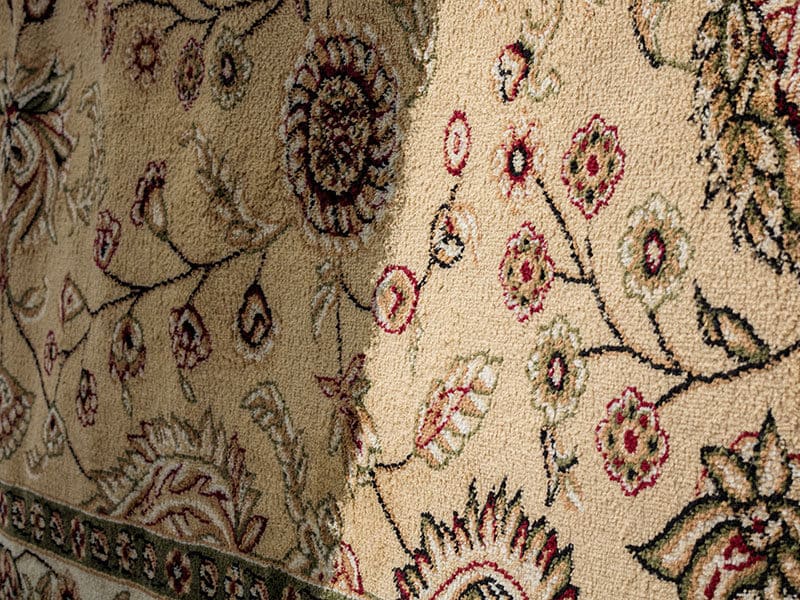
Don’t ignore even though it a small drop wet or just slightly damp. Wherever it has taken place, you must act to clean up the mess and begin drying. Well, extended humidity will cause the carpet to delaminate and thus separate all the layers.
It occurs when the glue weakens, and spaces between them become a refuge for molding. The wet carpets have a heavy, musty smell that stinks up the whole room. It takes time to care for and extract carpet odors.
Not only will the padding and the carpet be damaged by leaving wet for a long sit, but it also impacts your subfloor. These toxins enter the home when you leave moisture in a warm dark spot. And it’s difficult to remove once mold and moisture permeate the rug pad.
All About The Carpet’s Mold
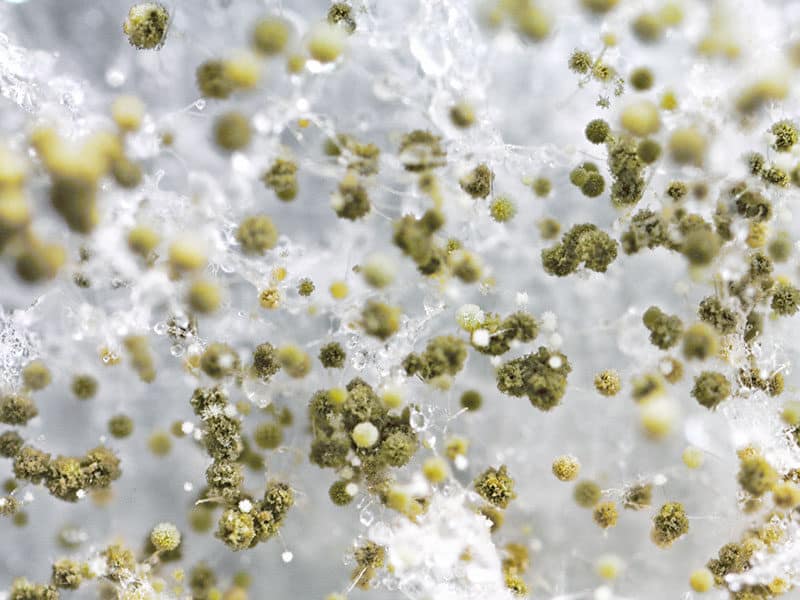
Let’s talk a bit about the advantages of carpet rugs. It is fluffy, maintains the floor warm, looks fantastic at your place, and filters out most of the allergens in the air.
How do you know that the mold is actually on the carpet? The only way to exclude molds is by regular inspection. Next, you should note down the mold’s life cycle so that you can arrange the right application, for instance, the handheld carpet cleaners, to remove it.
SIGNS Of Mold-Growing Carpets
Carpeted floors consist of tufts of tapestry, adhesive, and a backing. There are various ways to show that you are facing mold or bacteria in home carpets.
Musty Smell
One of the main indications of mold is the skunky odor. The guests would smell better than you. If someone visits your home and mentions the scent, then you should pay attention.
Strange Allergies
The infectors can cause allergies, asthma, bronchitis, and breathing issues. If you or someone has these problems, you have to remind yourself when the latest spilling and inspect your rug.
Damp Surface
If the carpet is damp recently, then the leak source can be under the tapestry. Even a small drink pours on the rug; it can also lead to mold. In any case, the water should be dried up as quickly as possible.
Discoloration
If mold growth is advanced, you will probably see discolored spots on your carpet. Usually, these spots are black, white, or different green shades. Be aware that before your carpet does, the area under it will discolor.
Positive In Mold Testing Kit
A mold test kit is one of the most effective ways to verify the existence of mold growth in your carpets. These kits are used to measure the airflow through the carpet. If having mold spores, they will land on the test kit and multiply to show consistent results.
WHEN To Find & WHAT To Do With Mold
Water should be immediately removed from carpeted floors since prolonged carpet saturation can split carpet apart, get wavy or cause mold output.
As bacteria and molds can form rapidly, water removal is of utmost importance. Follow to see when the deadline is and which removal base you have to join in.
How Long Do You Find Mold?
Many governmental organizations, including the EPA, say that bacteria and molds can start to develop in a wet carpet within 24 to 48 hours after they are wet. Usually, between two and 12 days after the fibers are exposed to moisture, the spores start colonizing.
The spores will not be visible during this period. After 21 days, where the mold or bacteria has begun to develop, you can see dark green patches or spots.
How Do You Remove Mold?
To get rid of the mold, dry the rug entirely. As bacteria and mildew can form rapidly, water removal is of utmost importance. Remember to isolate the zone so that the spores will not spread.
To scrub as much of the mold as possible using a stiff-bred brush. Then dry up with a vacuum and follow it to the affected area with the carpet cleaner sprays or removing unwanted stains with the carpet deodorizers.
Do not use chlorine bleach, in particular, because it damages fiber when you have nylon tapestries. Using a warm, dry vacuum to suck the moisture after you have washed the ground. You should then use a carpet fan to dry the area thoroughly.
Dry By Checking AREA’S SIZE
Drying wet carpet is better processed based on the volume of water and the total square wet footage. It is helpful to know how to dry the wet carpet, but considering the size, in general, it is much more practical.
Dry Small Area
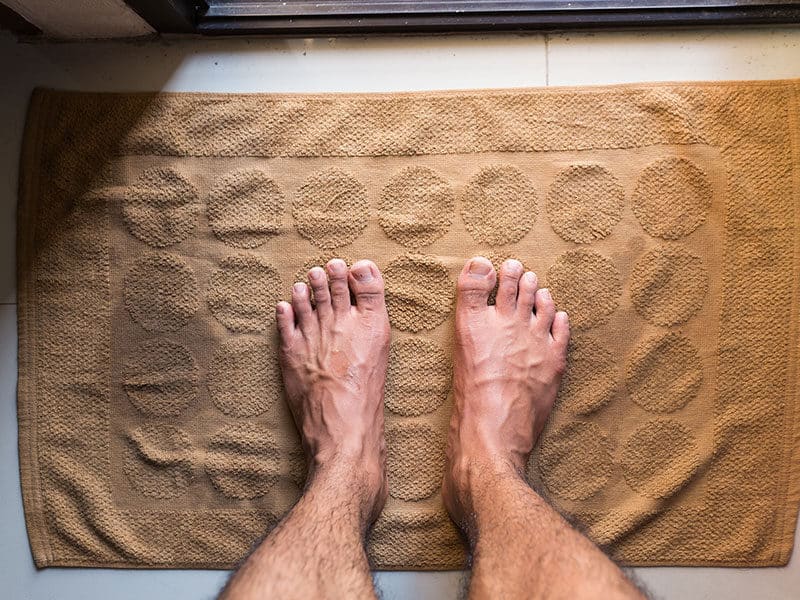
Extract Water
To extract as much water as possible, use a HEPA shop vacuum cleaner. Try using various attachments from big to small to see what works best. Push the fitting down to a good seal because it pulls water off the carpet pad since it holds the most water.
Make sure you have a wet vacuuming filter. The simple filter of the sponge kind works well. A paper filter clogs and decomposes.
Remove Left Over
After extracting from the shop vac, place dry towels into the wet spot. Go on and hop over the towels to force the water into the towel. Repeat until it’s dry while walking through.
Heat & Air Movement
Use a box heater or fan to blow warm air through the wet carpet. The warm air moves across and draws the water out of the rug.
If a dehumidifier is available, set a fan to blow the dry air from a dehumidifier through a wet carpet. Turn the speed into a high setting if you have a ceiling fan.
Dry Completely
When the carpet feels dry, keep the heater or fan in place for 24 hours at least. Although the tapestry is dry, the water also wicks up from the pad and releases it into the warm air that passes through the sheet.
Dry Medium Area
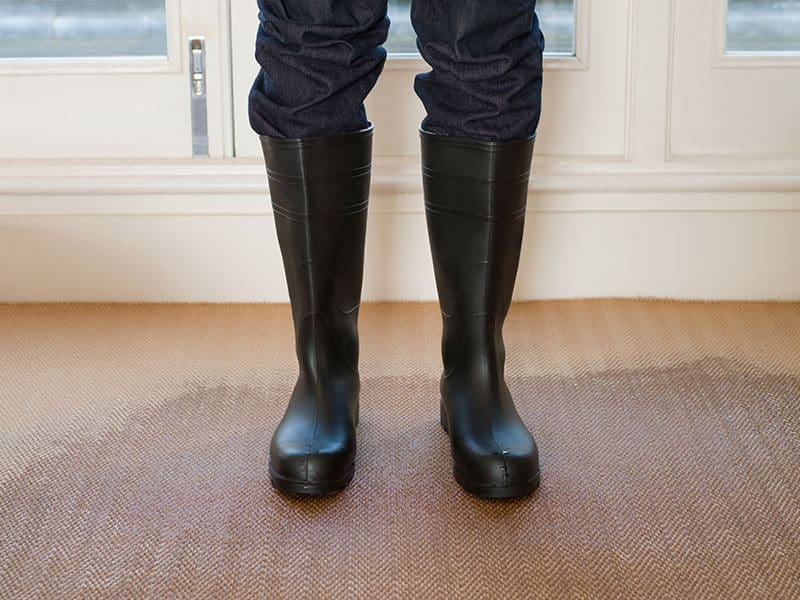
Extract Water
Apply the same techniques as drying the small areas.
Expose The Pad
Carpet is easier to peel back from the corner, so find an edge or closet near the wet spot. Take the tapestry fibers with your thumb and first finger, pull up and back near to the wall possible.
You can use pliers to hold the carpet well and start it. Don’t yank too hard, or you will pull out the fibers! Possibly you can hear some crackling sounds when pulling it out.
If the tapestry and pad have been dried and the carpet laid down, it may have shrunk down and cannot reach the way to the wall. To stretch it back in place, use a carpet kicker.
Run Shop-Vac and Towels Via Pad
Use the towels and shop vacuum when you have more than the pad exposed. Wet carpet can rate up to its weight several times in water.
Heat & Air Movement
Use dehumidifiers, heaters, or fans to move warm air over the pad. Focus on the pad, as it takes more time to dry than the carpet.
Dry Completely
You probably have taken away less than 50% of the water on your rug. So, it takes at least three days to get dry, be patient. When you don’t have enough drying facilities in 3 days in a medium wet carpet area, you have peeled the carpet back to help dry the pad.
Dry Large Area
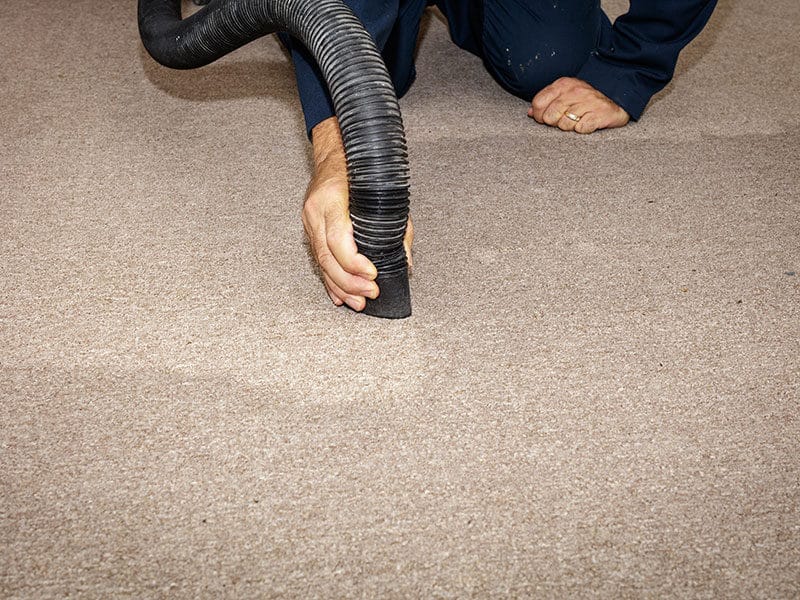
Since you don’t have a commercial carpet cleaner, you should call a professional water damage repairer. It is three days to dry out a house with considerable water in it with the latest high-tech equipment.
The problem is the water on your walls which surrounds the drywall. These ‘outside’ walls are insulated and can hold water for weeks like a sponge.
For a quick tackle, you can grab your canister bagless vacuum cleaner to sweep through the flooded floor while waiting for supports.
Dry HARD-TO-REACH Carpets
If there’s a small wet rug or carpet area, take it out of the floor and hang or put it outside until it’s totally dry. However, you might want to try to dry it when you’re dealing with a wet wall-to-wall carpet or a tapestry that’s too big to remove or carpets inside your car.
Wall To Wall Carpet Drying
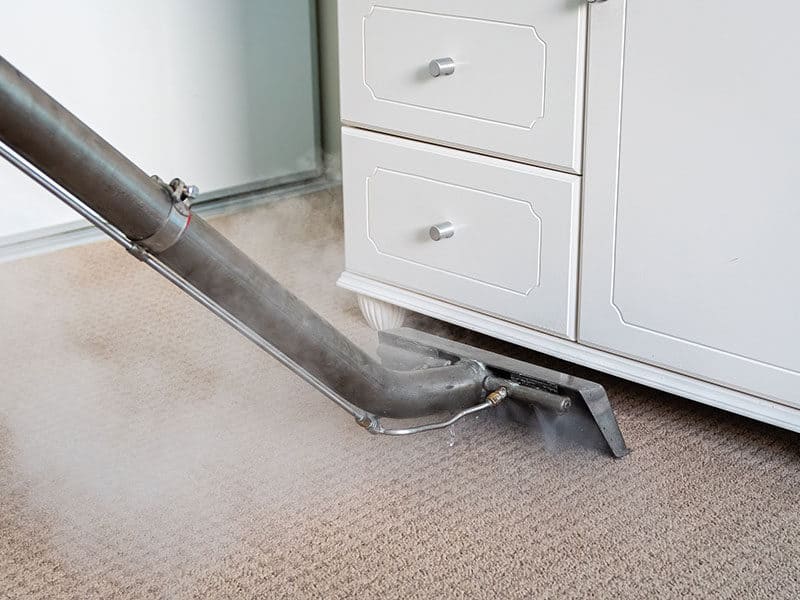
Move The Furniture
You take the stuff out to lift the carpet and check for the pad and under the floor. Leaving the furniture on the wet carpet will damage the furniture as well as the base.
Extract Water Out
You can get rid of the water in many different ways.
- Find the water-filtering vacuum or the carpet cleaner that is specifically designed for the home. Until you no longer get water, vacuum.
- Alternatively, the hot water extraction unit, such as a carpet steam cleaner, can properly suck the water out.
Dry Beneath The Carpet
The floor will buckle if it doesn’t dry completely. Go over the carpet. If you do have a squishing or sopping sound, then underneath the rug is certainly still water.
Raise Off The Carpet
Begin in the corner. Separate the tapestry from the padding and ground with a pair of work gloves or gloves. Don’t cut the tapestry because it is really hard to put together.
- Lift the tapestry to pull it off the installation strip from one corner. You can also do it on the side or edge when having a short side that easy to reach.
- Fold over the corner or side of the rug to check the pad.
Blow Warm Air
You will try to dry the pad without removing it, particularly if the pad appears only a little damp and the floor feels dry.
- In a closed room a dehumidifier draws water rapidly.
- Keep the corner raises to blow the air to the area downside the carpet. Turn the heat up and open the windows to get more air and wind.
- Put a hose on the vacuum exhaust, then put the hose under the rug and place the tapestry over the hose back. The warm air makes the carpet float through the pad and speeds up the process.
In the end, a call to the professional service who knows how to deal with a wall-to-wall wet carpet is one of the time-saving solutions.
Car’s Carpet Drying
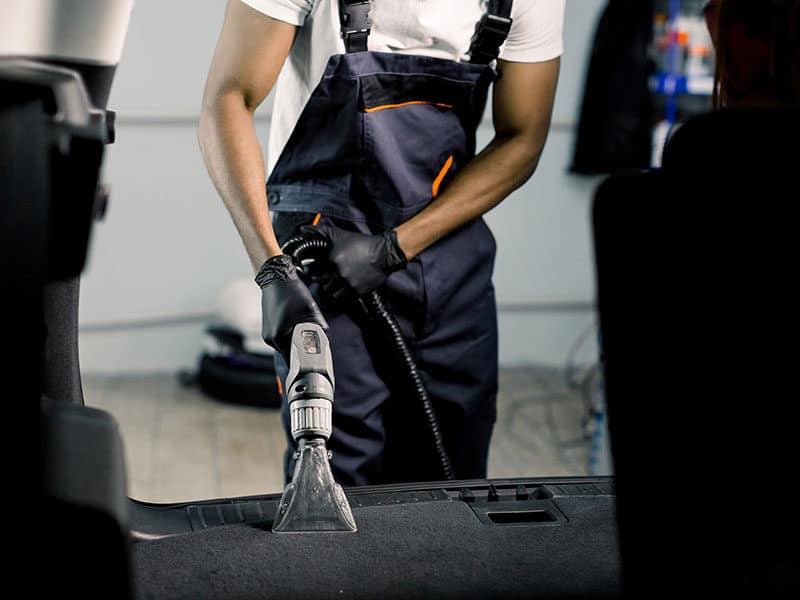
Take Action
Within 24 hours, mold can expand and cause many problems. It will ensure you avoid mold by drying the carpets and prevent water from coming into electrical places.
Track the Leak
You won’t do much good just dealing with your car’s rugs without finding and stopping the leak. You will continually have to dry your carpets.
Extract Water Out
Use a dehumidifier or a shop vacuum of muted versions since you are in a small car for the engine’s noise. Use them to remove, focus on the hard-to-remove areas.
- Place the dehumidifier in the car until the water seems gone.
- Ensure you also sprinkle water with rags on the car’s uncarpeted areas.
Check Under The Pad
Water tends to pool in the pad under the carpet. It causes mildew and mold problems.
- Peel up the carpet from the corners with work gloves and pliers.
- Avoid cutting the tapestry as it is incredibly hard to fix later.
Remove All Carpets
Remove the tapestry from the car, particularly when the problem is continuous. Peel it gently and bring it down to dry somewhere.
Dry The Carpets Separately
Once the carpet’s car has been removed, you must dry it entirely.
- Put towels on the rug, and walk through them to get the water in.
- Replace the wet towel with a fresh dry one.
- Set a hairdryer over wet towels. Continue to do so until they are completely dry.
Replace The Affected One
Sometimes the best thing is to replace your carpet if your family is sensitive to mold.
Causes & Solutions For Wet Carpet Smells
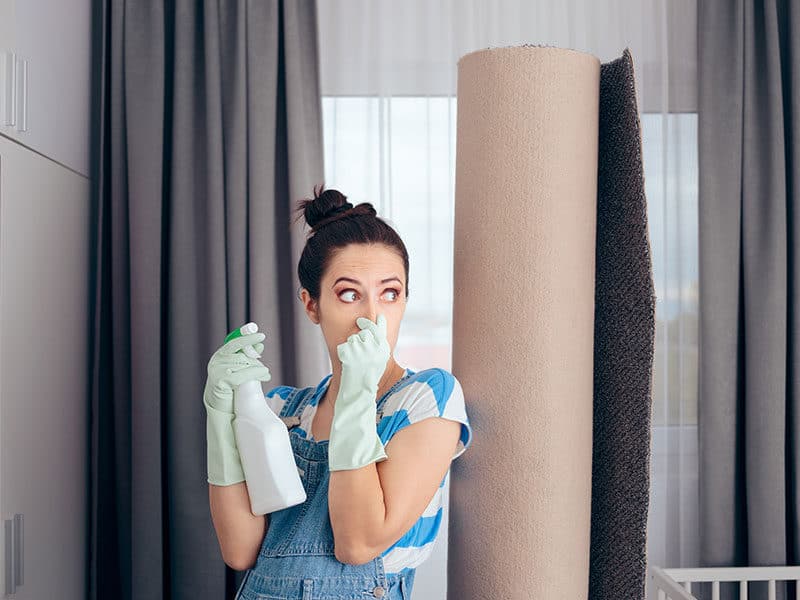
Smells may penetrate deep into the tapestries, and the situation even gets worse when you face a watering incident. How can you get rid of the carpet’s smell? And further, getting unpleasant odors out of carpet cleaners?
Wet’s Carpet Smell
I am identifying what causes the smells of the carpet before talking about how to clean them. Each has a distinctive aroma and a different way to approach cleaning.
Water Spills
Water may not smell on its own, but it does when being mixed with the fibers. Your entire room could end up reeking, depending on your carpet’s material.
Mildew & Mold Growth
While your tapestry may begin to stink wet, it makes mold smell worse. Mold is not pleasant; it leaves spores that can discolor and damage the carpet fabric, in addition to a scent of nasty.
Liquid & Stain Odors
Apart from the unmissable marks, wine, milk, and soft beverages leave unpleasant odors behind. Let’s look at milk, for instance. Besides somewhat nauseous, milk not cleaned from the carpet will go off, making the smell terrible.
Pet Stains
Even well-trained pets could cause nasty messes sometimes. Each stink-up contains harmful bacteria and can be stubborn if not cleaned properly.
You can imagine a typical stain marking after pets’ vomit. These kinds of messes call for quick action, and get the vomits clean and clear is a must!
Clean Wet’s Carpet Smell
Compared to a dry mess like dirt, cleaning wet carpet smells is much more involved. It cannot only be crossed by a vacuum and called a clean.
Take Carpet Out
Rugs and water-soaking carpets are reek. Try to move the affected tapestry outside to dry. If not, open the windows and air out the wet zone with a fan.
Direct sunlight blocks the growth of mold and helps rug dry faster. Also, it keeps the smells out of your home.
Apply Baking Soda
Consider disinfecting and deodorizing baking soda after drying. Backing soda is also an effective deodorizer that absorbs humidity and scent.
Apply the medium amount of baking soda to the carpet and keep it for 48 hours or overnight. You can mix the baking soda with vinegar if the recipe is not by itself done. The result is a highly potent cleaning chemical reaction.
Pick A Cleaning Solution
The mixture of baking soda, vinegar, and water does not yield the result you want. In such cases, it is time to step up to specific cleaning products.
Make sure your research is done. Some tapestries require delicate items, while other deodorizers clean your tapestry without causing any harm.
Vacuum To Remove Remaining
I advise using a vacuum to take away all the leftovers. Don’t worry about the moisture sucks in the vacuum accidentally. After 48 hours, it’s safe enough for any household vacuums.
Dry Carpet After Cleaning
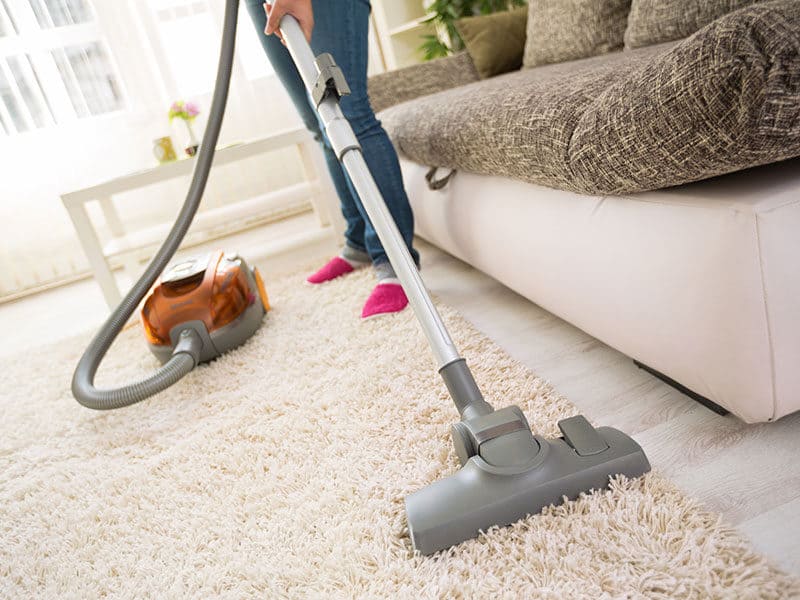
After cleaning, the carpet might get wet some parts and do call for a deep dry. Here are a couple of tricks you can do to dry your carpet:
Set An Airflow
If your carpet is in a window room, open them and welcome the fresh air. Open one window, and the other one open a bit if you have two windows opposite each other. It creates a strong crosswind that helps your rug dry faster.
During rainy and cloudy days, your tapestry won’t do much good. Instead, this weather will create a wetter environment.
Use The Fan
The ceiling fan will work very effectively if your carpet is situated right under a fan. The fan creates a concentrated air funnel that dries your tapestry rapidly. It is also a great way to avoid musty smells because it circulates in the air.
You can use a standing or desk fan when you do not have a ceiling fan. However, two smaller fans could also supply enough circulation while placing from two sides of the carper.
Utilize The Air Conditioner
It is not as successful as the fan because the air conditioning system will not circulate as much. The AC- unit can be useful on rainy days when the outside weather is slightly wet.
Air conditioning’s cold air reacts to the moisture in the tapestry. It’s hard to tell if your carpet is dry or cold. It takes longer to dry up completely when using frigid air.
Blow To Dry
You would have a blow-dry if professionals cleaned your carpet. They usually dry up certain areas through a blower or fan.
Dry Carpet After Flood
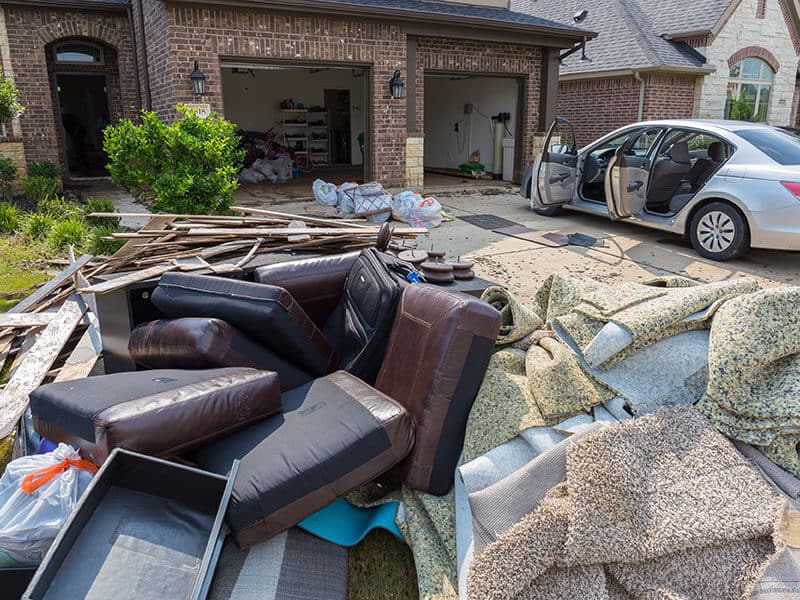
After floods, damp or wet carpets can lead to mildew and other fungi buildups, resulting in potential health risks. Here are some successful steps to dry the mat after a flood:
Use A Shop Vacuum
Most commonly, on woodwork shops and building sites, shop vacuums are used. They have high suction and can remove objects better than regular vacuums.
Some of these vacuums remove water, frequently known as wet-dry shop vacuums. They have a powerful engine and a special water filter.
You will have a range of attachments for the size and area you clean. Push the fixture into the carpet when drying. The paddling, where most of the water is held, will intact a powerful suction.
Apply Towel
Place a few dry towels on the carpet after collecting the water by a shop vac. The towels absorb some of the excess water. Repeat until the towels are dry, even if you walk on the places.
Heat & Air
You can use a fan or box heater to dry your tapestry, similarly to the post-cleaning method.
Be careful not to start a fire if you want to use a box heater. Always check it to ensure that the carpet is not overheated and place it somewhere else.
Dry The Exposed Padding
It is time to start drying once you have padding exposed. You use the vacuum here to dry up completely.
Let the dehumidifier and the heater work together with the fans. You may believe the tapestry is dry, and the pad is dry. However, you still need to keep the dryer on this period.
Put Back The Carpet
It can be difficult to put the pad and carpet in place, particularly since they tend to shrink when dried. You could stretch it yourself if the distance between the tapestry and the wall is short.
However, you would need a carpet knee-kicker if the range is wide. You clip the teeth to the carpet and use the knee to strike the padded portion. It gently stretches out the rug and places it in place.
FAQs
Right here are the tips and latest experiences on drying wet carpets so that you can shift furniture to your room again and welcome guests as soon as possible.
All In One Word “Dry Thoroughly”
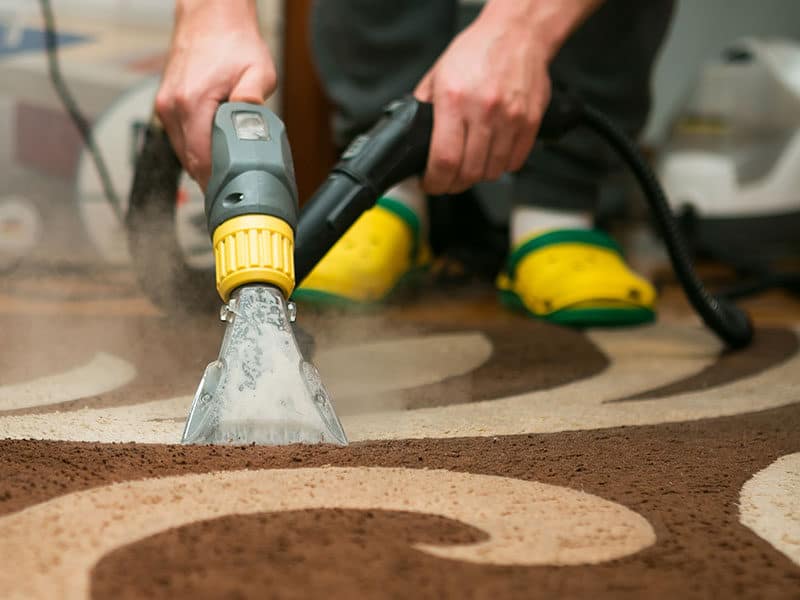
Always keep your carpets dry so that you can sit and walk comfortably. I hope you got many helpful tips from my today guides on how to dry wet carpet.
Furthermore, do you have any notes to share with me and others? Write below in the comments your favorite, common use tips.
Take some time to share with your friends, then you will not own the neatly fresh carpets in the house, but you also enjoy the cozy feelings every time and every place walking on a carpet flooring.
